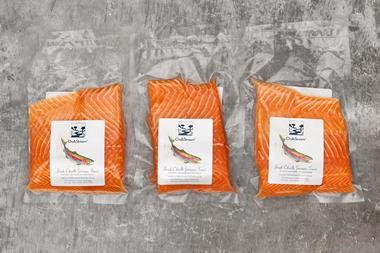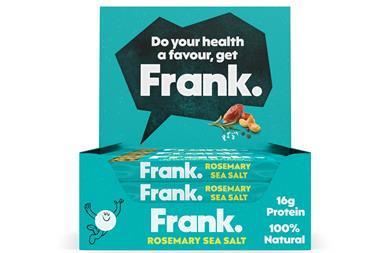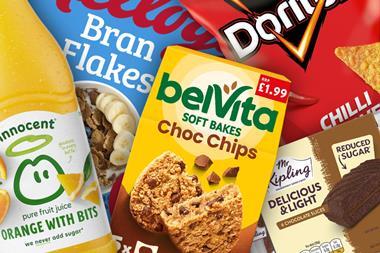In four years, discounters have more than doubled their share of milk sales. How? And do the mults care? By Adam Leyland and Elinor Zuke
This week saw yet another discounter parting company with its boss, as Lidl UK chief Frank-Michael Mros stepped down after less than a year in the job.
Together with the departure of several previous incumbents at Aldi, Netto's sale to Asda, and the curtailing of expansion, Mros's decision to leave confirms how tough life has been for the discounters since Tesco and the big four supermarkets responded to their growing threat.
But in one key category the soft discounters together with frozen discounter brethren such as Iceland and Farm Foods are storming ahead: milk.
Since June 2006, these limited-assortment players have more than doubled their share of pasteurised milk sales, from 4.9% to 10.7% this year [DairyCo/Kantar Worldpanel data, 13 June 2010]. And it has accelerated at its fastest rate over the past year, with volumes rising by 43%, from 315 million litres to 452 million.
"Farm Foods and Iceland are massively overtrading in milk," says Kantar category analyst Emma Grundy. "Seventy-seven per cent of Farm Foods' total dairy trade in June was milk, and for Iceland 50% of its total dairy trade is milk.
"Convenience has got a lot to do with it. The discounters are now providing strong competition to independent convenience store operators, aided by Iceland's acquisition of 50 Woolworths stores, in prime convenience locations on the high street," she adds.
But Grundy believes these market share increases will also be "a big concern" for the major multiples, with the volume of premium-price milk from their dedicated supply chain arrangements declining (see chart). So what can they do to win back market share?
Relative to overall fresh and chilled sales, all the supermarkets undertrade on milk to a greater or lesser extent. At 96%, Tesco comes closest to matching the market average, partly thanks to its extensive convenience store operations.
The supermarkets are also limited by their dedicated supply chain agreements. In return for guaranteed supply, supermarkets pay a premium on the vast majority of milk they sell. By contrast the discounters can buy milk via the spot market.
Since they also operate on a lower-cost operating model, and accept a lower margin (average supermarket margins increased from 13.1% in March 1999 to 28.9% in March 2009, according to DairyCo), they can afford to undercut their bigger rivals. In the year to 13 June, the average price of a litre of milk in the discounters was 17 ppl lower than in the multiples [DairyCo].
This growing price differential rather than a new stance on below-cost booze was the real context for Asda's milk price war, according to Him! CEO Mike Greene.
With the headline milk price reduced to £1.25 for four-pint cartons of semi, skimmed and whole milk, it is now far closer in price to the discounters. "Lower prices can change consumer behaviour. People look at milk and bread and think if they're that much cheaper on those products they must be on other products," adds Greene.
Of course, price is not the only route open to supermarkets. Another weapon is range. But the market for organic and filtered milk lines is limited. "People spend about six seconds looking at a product on the shelf, but with milk it's less than one," says Grundy.
The most recent NPD has been more fruitful, she concedes, with 1% milk sales growing by 300% in the past two years [Kantar, 52w/e July 2010]. And, while still accounting for less than 5% of the market, this new line is significant in more ways than one: because 1% milk can be bought on the spot market, the likes of Sainsbury's and Morrisons have used 1% milk to defend the current price war without loss of margin on their premium milk.
The mults are also working to tackle undertrading in other ways. Sainsbury's dairy buyer Emma Metcalfe-King says it is focusing on availability in its smaller shops. But milk "isn't just a distress purchase as customers make planned purchases of large quantities", she adds.
If Asda's new price is a runaway success, says Greene, it's not inconceivable that a permanent profit correction is accepted. "If it's sustained at a certain level you won't see them stay out of line for something as important as milk."
A more likely outcome, DairyCo believes, is that the proportion of milk sold under dedicated contracts will decrease. Warns marketing intelligence manager David Swales: "Retailers are unlikely to accept a lower margin indefinitely and may look to re-establish margins by increasing prices to consumers or attempting to negotiate lower prices from their suppliers."
This week saw yet another discounter parting company with its boss, as Lidl UK chief Frank-Michael Mros stepped down after less than a year in the job.
Together with the departure of several previous incumbents at Aldi, Netto's sale to Asda, and the curtailing of expansion, Mros's decision to leave confirms how tough life has been for the discounters since Tesco and the big four supermarkets responded to their growing threat.
But in one key category the soft discounters together with frozen discounter brethren such as Iceland and Farm Foods are storming ahead: milk.
Since June 2006, these limited-assortment players have more than doubled their share of pasteurised milk sales, from 4.9% to 10.7% this year [DairyCo/Kantar Worldpanel data, 13 June 2010]. And it has accelerated at its fastest rate over the past year, with volumes rising by 43%, from 315 million litres to 452 million.
"Farm Foods and Iceland are massively overtrading in milk," says Kantar category analyst Emma Grundy. "Seventy-seven per cent of Farm Foods' total dairy trade in June was milk, and for Iceland 50% of its total dairy trade is milk.
"Convenience has got a lot to do with it. The discounters are now providing strong competition to independent convenience store operators, aided by Iceland's acquisition of 50 Woolworths stores, in prime convenience locations on the high street," she adds.
But Grundy believes these market share increases will also be "a big concern" for the major multiples, with the volume of premium-price milk from their dedicated supply chain arrangements declining (see chart). So what can they do to win back market share?
Relative to overall fresh and chilled sales, all the supermarkets undertrade on milk to a greater or lesser extent. At 96%, Tesco comes closest to matching the market average, partly thanks to its extensive convenience store operations.
The supermarkets are also limited by their dedicated supply chain agreements. In return for guaranteed supply, supermarkets pay a premium on the vast majority of milk they sell. By contrast the discounters can buy milk via the spot market.
Since they also operate on a lower-cost operating model, and accept a lower margin (average supermarket margins increased from 13.1% in March 1999 to 28.9% in March 2009, according to DairyCo), they can afford to undercut their bigger rivals. In the year to 13 June, the average price of a litre of milk in the discounters was 17 ppl lower than in the multiples [DairyCo].
This growing price differential rather than a new stance on below-cost booze was the real context for Asda's milk price war, according to Him! CEO Mike Greene.
With the headline milk price reduced to £1.25 for four-pint cartons of semi, skimmed and whole milk, it is now far closer in price to the discounters. "Lower prices can change consumer behaviour. People look at milk and bread and think if they're that much cheaper on those products they must be on other products," adds Greene.
Of course, price is not the only route open to supermarkets. Another weapon is range. But the market for organic and filtered milk lines is limited. "People spend about six seconds looking at a product on the shelf, but with milk it's less than one," says Grundy.
The most recent NPD has been more fruitful, she concedes, with 1% milk sales growing by 300% in the past two years [Kantar, 52w/e July 2010]. And, while still accounting for less than 5% of the market, this new line is significant in more ways than one: because 1% milk can be bought on the spot market, the likes of Sainsbury's and Morrisons have used 1% milk to defend the current price war without loss of margin on their premium milk.
The mults are also working to tackle undertrading in other ways. Sainsbury's dairy buyer Emma Metcalfe-King says it is focusing on availability in its smaller shops. But milk "isn't just a distress purchase as customers make planned purchases of large quantities", she adds.
If Asda's new price is a runaway success, says Greene, it's not inconceivable that a permanent profit correction is accepted. "If it's sustained at a certain level you won't see them stay out of line for something as important as milk."
A more likely outcome, DairyCo believes, is that the proportion of milk sold under dedicated contracts will decrease. Warns marketing intelligence manager David Swales: "Retailers are unlikely to accept a lower margin indefinitely and may look to re-establish margins by increasing prices to consumers or attempting to negotiate lower prices from their suppliers."



















No comments yet